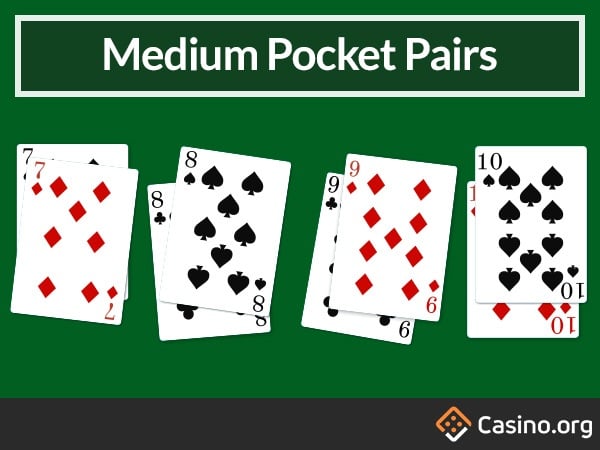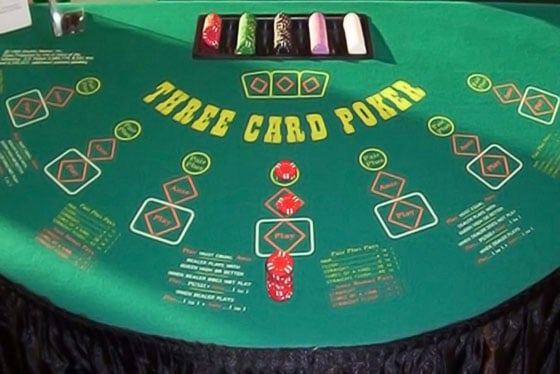Poker 3 Bet Meaning
Posted : admin On 4/7/2022Three betting is a critical part of modern poker. Before the advent of online poker, a third bet in no limit and pot limit games generally indicated a very strong hand. Now, as games have gotten more aggressive, the three bet is used quite liberally by players in cash and tournament play alike. First off, lets level set what a pre-flop 3-bet is. A 3-bet occurs when someone open-raises and another person re-raises pre-flop. The re-raise is a 3-bet. This might be a bit confusing to some people because the 3-bet is the second raise, why is this?
Raise 3-Bet and Fold to 3-Bet. Represents the percentage of times the player re-raised a raiser when they had the opportunity or folded when they faced such a re-raise. This poker HUD statistic is most useful during the pre-flop action – then it corresponds only to the possible starting hands and not made ones (for the purpose of clarity: BB is Bet 1, a raise is bet 2 and the re-raise is bet 3). Have in mind, that these indicators require much larger sample to be reliable, as the situation occurs less often – don’t even bother looking at them before you have 1000+ hands on the opponent. Common re-raise range pre-flop is QQ+ and AKo, which corresponds to 2,6% of total hands. You will be amazed how many otherwise good online poker players have a Raise 3-Bet stat of 2,5-3%, which makes them really predictable.
Poker 3 Bet Meaning Free
On the other hand we have the Fold to 3-Bet stat, which comes in handy when we have to decide whether to re-raise an opponent – especially preflop.
Examples using Raise 3-Bet
/For sake of simplicity we’ll assume all opponents have stacks of about 100BB/
Full ring table, we have AQ offsuit in MP and raise 3xBB. A player in LP re-raises us 9xBB. Everyone else folds and the action is back to us. What should we do? Let’s look at the stats.
a) VPIP=16 / PFR=10 / Raise 3-Bet=2,75
We are up against a TAG player with seemingly established habits in 3-betting with only the best hands. We should fold as his probable range has us crushed, but you must be careful if your own Fold to 3-Bet percentage is too high, as observant opponents will try to use your tendencies and 3-Bet you more often.
Three-Bet Commonly used to refer to an initial reraise before the flop. The term has its origins in fixed-limit games where an initial raise is worth two bets, then the reraise is equal to three.
b) VPIP=23 / PFR=18 / Raise 3-Bet=11
This opponent is a little loose and definitely overly aggressive. Let’s analyze his possible holdings and see how they compare to our hand.
He seems to 3-Bet the top 11% of his hands. The top 2,6% /QQ+,AK/ of hands beat us 3 to 1. With the next 3% /77-JJ, AQ/ we tie (55 to 45 in his favor actually) and against the rest about 5% we are ahead 70/30.
The range analysis shows calling as marginally profitable in theory. Don’t forget that this calculation is accurate only in all-in situations with five visible cards, and also the fact that your AQ is not a great hand to play out of position.
In this case you should take into consideration how deeply stacked your opponent is – too aggressive players are often short on chips and present less of a threat. In conclusion, calling here is an acceptable play but you should have a plan how to outplay your opponent after the flop.
Examples using Fold to 3-Bet
/For sake of simplicity we’ll assume all opponents have stacks of about 100BB/
Full ring table, we hold a pair of 9s on the button. A player in MP raises 3xBB, a second player on the CO (the cut-off seat) calls and it’s our turn. Should we call or re-raise? Let’s look at the stats.

a) Player in MP: VPIP=22 / PFR=10 / Fold to 3-Bet=74%
Player on the CO: VPIP=19 / PFR=11 / Fold to 3-Bet=65%
Both players look like TAGs with reasonable Fold to 3-Bet percentages, although maybe a little higher than I’d recommend. The sequence in this hand is interesting because it allows us to make a squeeze play, which increases our folding equity. If we just call, we give the blinds good pot odds to play most hands and against 3-4 opponents we’re basically set-mining the flop. But if we make a strong re-raise of about 9BB, we achieve the following: first – almost certainly we’ll take the blinds out, second – we put strong pressure on the player in MP, who has an active opponent behind him and also has to act first after the flop, third – we show considerable strength against the player on the CO, who has demonstrated weakness by flat-calling the first bet and also is out of position in the hand. Even if we get called, we can hit a good flop of low cards or force a fold with a C-Bet.
b) Player in MP: VPIP=14 / PFR=8 / Fold to 3-Bet=55%
Player on the CO: VPIP=26 / PFR=13 / Fold to 3-Bet=65%
Now the first player is a bit of a nit. He plays quality hands and in result doesn’t have to respect 3-Bets as much. This reduces our chances of forcing him out of the hand. He will probably call if we re-raise, as he may also suspect that we are making a move.
The second player is a little loose and will additionally get proper pot odds if the first player calls (the pot would be 3+3+9+0,5+1+6=22,5BB giving him 3,75/1 to call). There’s a high chance he’ll also pay to see the flop.
Basically a re-raise will only put more money in the pot and won’t bring us any information about the opponents’ hands. Against these players we better flat-call and continue in the hand only if the flop is favorable.
Get a poker tracking program like Poker Tracker to put the odds in your favor!
By Alton Hardin
Introduction
For beginners, 3-betting can be a confusing concept to understand and properly apply at the poker tables. With so much theory being discussed in books, forums, and training videos its easy for beginners to get lost in a fog of poker haze, not knowing when to 3-bet, what range of hands to 3-bet and why. The purpose of this article is to provide a basic framework that beginning and struggling poker players can use to effectively 3-bet.
What Is The Pre-Flop 3-Bet?
First off, lets level set what a pre-flop 3-bet is. A 3-bet occurs when someone open-raises and another person re-raises pre-flop. The re-raise is a 3-bet. This might be a bit confusing to some people because the 3-bet is the second raise, why is this? Well, in Texas Holdem the posted blinds are considered the first bet, the initial open raise is considered the second bet, and the re-raise is therefore the third bet, hence the term 3-bet.
Linear and Polarized 3-Bets
In poker, there are two main categories of 3-bets, linear and polarized 3-bets:
Linear 3-Betting Range
A linear 3-betting range is one composed solely of value-bets. When we 3-bet a linear range, we are 3-betting for value. For example, the image below shows a linear value 3-betting range of JJ+, AQs+, AKo.
Polarized 3-Betting Range
A polarized 3-betting range is one composed of a combination of value hands and bluffs. So, unlike the linear 3-betting range, when we 3-bet a polarized range, we are sometimes betting for value and other times bluffing. The below image shows a polarized 3-betting range composed of value hands and bluff hands. In this example, we are 3-betting TT+, AJs+, AQ+ for value and 44-22, A4s-A2s, 87s, 76s as a bluff.
Why Do We 3-Bet?
Hopefully you’ve already noticed this from the section above, but we 3-bet for two specific reasons:
- When we have a hand that is too good to call, such as KK or AA for value
- When we have a hand that is too bad to call, such as A2s or 33
If we have a hand that fits within these two different reasons, then we have a hand we can “potentially” 3-bet.
Linear or Polarized?

Poker 3 Bet Meaning Urban Dictionary
So which should you use, the linear or polarized 3-betting model? It depends on our opponents.
Can We 3-Bet Bluff?
You probably heard the phrase, “never bluff the calling station”. Well the same goes for 3-bets. You should only apply the polarized 3-betting model with 3-bet bluffs if your opponent(s) are folding to a lot of 3-bets. If they aren’t, then 3-bet bluffing will only cause you to unnecessarily spew off a lot of chips pre-flop. Conversely, if your opponent(s) are folding to a high frequency of 3-bets, approximately 67% then you can 3-bet bluff profitably.

Therefore, 3-bet bluffing and the polarized 3-betting model works best when you have a lot of fold equity. When your fold equity is low, don’t apply this model and stick with the linear 3-betting model.
How Wide Should We Value 3-Bet Bet?
Again, this is dependent upon how your opponent(s) are reacting to 3-bets. When you are 3-betting for value, the most important factor is your opponent’s 3-bet calling range and 4-betting range.
When you are 3-betting for value, you goal is to maximize your long-term expectation in the hand by having your opponents call your 3-bet with worse hands. For example, if your opponent is folding to 100% of 3-bets (this isn’t really realistic but proves a point), then it does you no good to 3-bet KK or AA. Against this specific opponent it is more profitable to flat his or her pre-flop raise. Conversely, if your opponent is folding to next to no 3-bets, then it is highly profitable to 3-bet a very wide range for value!
So here are some general guidelines on 3-betting for value:
- Always adjust your 3-bet value range to how your opponents react to 3-bets
- Consider your opponent’s 3-bet flatting range and 4-betting range
- The less your opponent is folding to 3-bets, the more you can widen your value range
Low versus High Fold Equity
Therefore, if you have high fold equity you should employ the polarized model. If you have low fold equity, use the linear 3-betting model.
3-Bet Sizing
When sizing your 3-bets, I recommend beginner start with the 3x rule: raise three times your opponents initial open raise sizing.
- When you are out of position to the raiser, make your sizing a bit more, closer to 3.5x. Why? Our positional disadvantage in the hand.
- When you are in position to the raiser, make you sizing a bit less, closer to 2.8x. Why? Our positional advantage in the hand.


Summing Up
This short poker strategy article on 3-betting 101 covered the basics behind 3-betting and linear versus polarized 3-betting ranges. While this article is far from being a comprehensive 3-betting strategy guide, it should help guide beginners in the right direction with their 3-betting game.
For a more comprehensive overview of 3-betting, be sure to watch our The Three-Betting 101 Course!